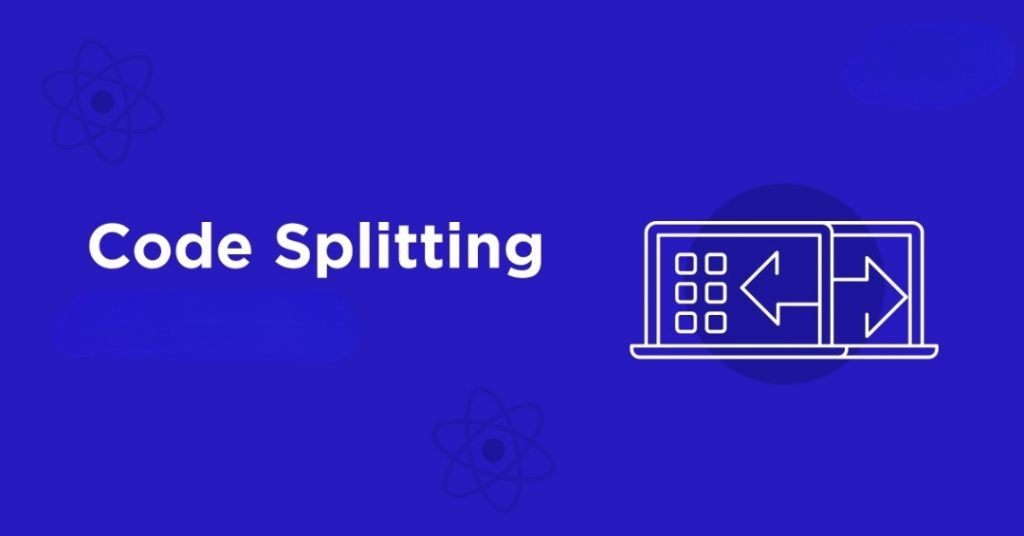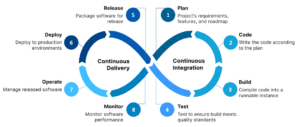In web development, speed is everything. As users’ attention spans shrink, a slow website leads to lost traffic and poor user satisfaction. One of the most effective ways to improve web application performance is Code Splitting..
Code splitting divides your application’s code into smaller chunks that load only when needed, rather than loading everything upfront. This technique reduces load times, boosts performance, and enhances the overall user experience.
In this blog, we’ll dive into code splitting—what it is, how it works, and why it’s essential for web performance.
What is Code Splitting?
At its core, code splitting breaks your application’s code into smaller, more manageable pieces, or “chunks.” Instead of loading one large bundle of JavaScript all at once, code splitting loads only the necessary code initially. As users interact with the site and explore different features, they load additional chunks of code as needed.
This method prevents users from waiting for unnecessary code to load, allowing them to interact with the site quickly. Code splitting is especially beneficial for large-scale applications, where loading everything upfront would be inefficient and slow.
Why is Code Splitting Crucial for Web Performance?
- Faster Initial Load Times The initial load time plays a critical role when users visit a website. Slow loading increases bounce rates, meaning users leave the site before it fully loads. One of the causes of slow load times is the large amount of JavaScript that needs to download in a traditional, single-bundle approach. Code splitting ensures that only essential code loads first, significantly reducing the initial download size. This results in faster load times. For example, if the homepage only needs a small portion of JavaScript, code splitting loads the rest of the code only when necessary.
- Improved Time to Interactive (TTI) Time to Interactive (TTI) measures how long it takes for a page to become fully interactive—when users can interact with the page without waiting for more to load. A slow TTI frustrates users and leads to poor experiences. Code splitting ensures that only the critical parts of the site (like the homepage or main content) load first. Non-essential features or routes load dynamically as users interact with them. This lets users engage with the site almost immediately, improving TTI and making the site feel faster.
- Optimized Resource Usage and Bandwidth Websites often contain many resources, such as images, fonts, and JavaScript, some of which users may never need. Without code splitting, users are forced to download large amounts of code they won’t use, especially if they only visit one page or section. Code splitting makes sure only the relevant JavaScript loads based on the user’s current interaction. For instance, if a user visits the homepage, they don’t need to download code for the contact form or other sections until they navigate to those pages. This reduces bandwidth usage and lessens the load on the server by avoiding unnecessary code.
- Better Caching Efficiency By splitting your code into smaller chunks, you improve caching efficiency. Most browsers cache files to prevent re-downloading them every time a user visits a page. In a traditional setup, the browser has to re-download the entire JavaScript file if any part of it changes. With code splitting, the browser only needs to re-download the chunks that change. For example, if the homepage code hasn’t changed, the browser will use the cached version. When users visit other parts of the site, the browser downloads and caches only the required code, speeding up load times for return visitors.
- Improved User Experience Ultimately, code splitting improves the user experience. Fast websites keep users happy and engaged, while slow websites push users away. By reducing the code that needs loading upfront, code splitting ensures a smoother, quicker, and more responsive experience. When combined with other best practices like image optimization, caching, and lazy loading, code splitting helps build a website that feels fast and reliable.
How Code Splitting Works
Modern JavaScript tools and bundlers, such as Webpack, Parcel, and Rollup, support code splitting. These tools analyze your application’s dependencies and automatically generate smaller, separate bundles based on your app’s structure. The bundles load dynamically when needed.
For example, when users navigate to a specific section of your site, the relevant code loads asynchronously instead of being part of the initial bundle. This approach enhances the website’s speed and responsiveness.
Key Techniques for Code Splitting:
- Splitting by Route: This method divides your application based on different pages or sections. When users navigate to a new page, the code for that page loads on demand.
- Splitting by Component: This method splits large components into smaller, more manageable pieces. It loads only the components necessary for the current view, reducing the initial bundle size and preventing unnecessary components from loading.
- Vendor Splitting: Code splitting also applies to third-party libraries, such as React or Lodash. These libraries bundle into separate files, allowing the browser to cache and reuse them across the site.
Tools to Implement Code Splitting
- Webpack Webpack is one of the most popular bundlers and supports code splitting out of the box. It automatically splits code by route, component, or vendor libraries. Webpack’s flexibility lets developers fine-tune how they split their code.
- Parcel Parcel is a zero-config bundler that automatically handles code splitting. It detects dynamic imports and creates separate bundles, optimizing your website without manual configuration.
- React and Vue.js Popular JavaScript frameworks like React and Vue.js support code splitting with features like
React.lazyand Vue’s async components. These features enable developers to import components only when necessary, further improving load times.
Conclusion
In today’s fast-paced web environment, performance is essential. As websites grow in complexity and feature-richness, optimizing load times and responsiveness is crucial. Code splitting stands out as a powerful technique that significantly improves web app performance by reducing initial load times, improving time to interactive (TTI), and using resources more efficiently.
By splitting your application into smaller, manageable chunks, you ensure that users download only what they need, when they need it. This approach leads to faster load times, better caching, and an overall improved user experience.nks, you ensure that users only download what they need, when they need it. This leads to faster load times, better caching, and an overall improved user experience.




